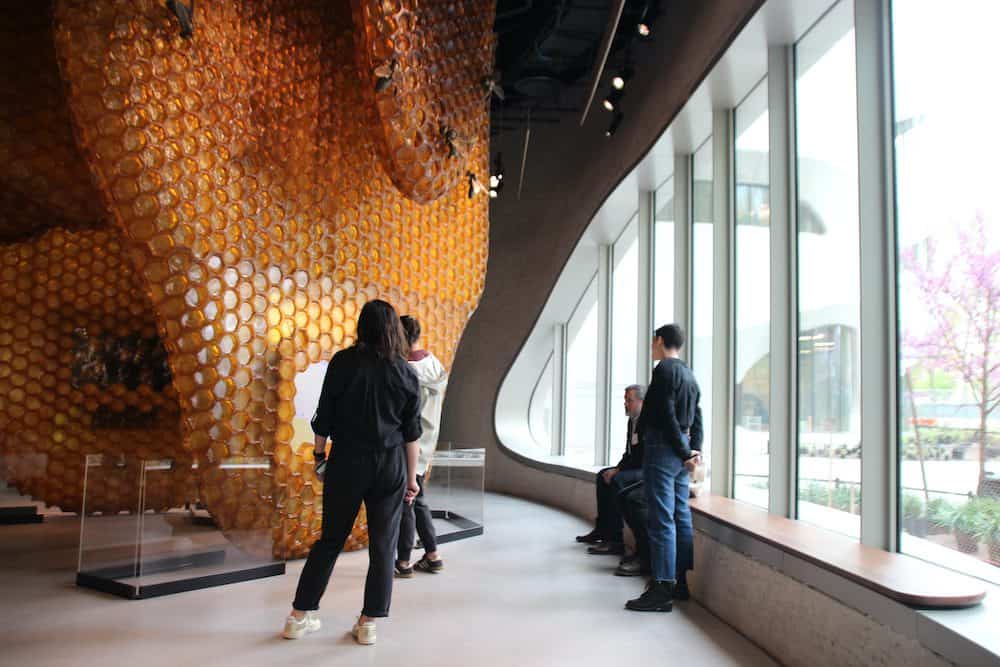Four times a year, New York celebrates Manhattanhenge, days on which the sun sets in exact alignment with Manhattan’s grid of streets.
The rectangular network with its unobstructed view of the horizon to the west, paired with the movement of the earth around the sun, means that the whole or half of the sun appears for a few minutes to light up the canyon of skyscrapers.
The well-known astrophysicist Neil deGrasse Tyson of the New York Museum of Natural History popularised the natural spectacle some time ago.
This year, for the first time, the phenomenon, which gets its name from Britain’s Stonehenge landmark, can be witnessed from the American Museum of Natural History (AMNH) itself.
Its extension, open to visitors from May 4 onwards, has a large glass façade designed precisely for this purpose.
The Manhattanhenge phenomenon is said to have inspired architect Jeanne Gang to design the bright, light-filled building with curved lines, which from the inside is reminiscent of a kind of tunnel system in a mountain.

The museum, which opened about 150 years ago in Manhattan right next to Central Park, provides information on many areas of science, including animals, plants, climate change, the formation of the earth, environmental protection and outer space.
The natural history museum has been world-famous at least since the hit comedy “Night at the Museum”, in which leading actor Ben Stiller takes a job as a night watchman and then finds that the exhibits come to life at night.
The planning and construction of the 22,000-square-metre extension, which cost around $465 million, took almost 10 years; among other things, the pandemic caused numerous delays.

Officially titled the Richard Gilder Center for Science, Education, and Innovation, the latest space in the sprawling museum is just one of many other buildings spanning several blocks in size.
On the one hand, it offers space for exhibitions, rooms for learning and research, archive storage and a restaurant. On the other hand, it is intended to simplify, regulate and better distribute the flow of visitors through the entire museum.
The AMNH is one of New York’s most popular attractions and has become so crowded by its several million annual visitors that an extension had become necessary.
Sean Decatur, who just became the first black man to head the museum (succeeding Ellen Futter, who was the first woman to head the institution for some 30 years), said it would be a great pleasure to welcome visitors to the new building.

Perhaps the most famous sights in the museum are the huge dinosaur skeletons as well as life-size imitations of elephants, lions and a blue whale hanging from the ceiling in one exhibition room.
The exhibits in the new extension, on the other hand, are rather small: here the focus is on insects and there are even living butterflies to marvel at.
But the real star is the building. The New York Times praised the building, financed with public funds and donations, as “a poetic, joyful, theatrical work of public architecture and a highly sophisticated flight of sculptural fantasy.”

dpa via Reuters Connect







